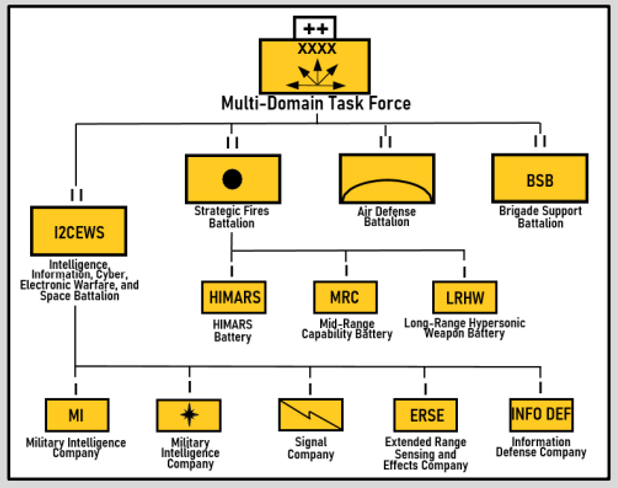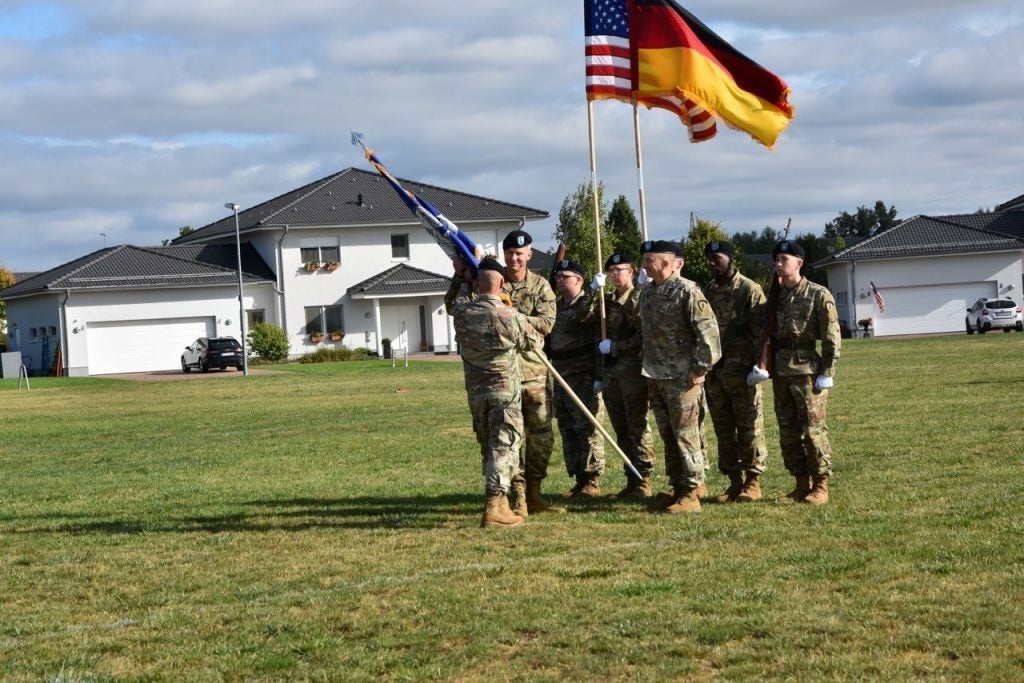US Activates New Multi-Domain Task Force in Germany
In a ceremony on 16 September, in Wiesbaden, Germany, the US Army activated its second Multi-Domain Task Force (MDTF). According to the commander of the brigade-sized unit, Colonel Jonathan Byrom:
“The 2nd Multi-Domain Task Force provides additional capabilities for U.S. Army Europe and Africa to leverage in preventing conflict, shaping the security environment, and if necessary, prevailing in large-scale ground combat operations. […] As a part of a joint force, we synchronize precision effects in support of U.S. European Command and U.S. Africa Command objectives. We look forward to working with our multinational Allies and partners across all domains.”
The first such unit was launched experimentally in 2017 at Joint Base Lewis-McChord in Washington; it remains there and is focused on the Indo-Pacific region. In total, the army currently plans to field five such units. Two are to be centered around the Indo-Pacific, one on Europe, one on the Arctic and one for global deployment. Each is to be “tailored to Combatant Commander needs”. The MDTF is designed to be well-suited for multi-domain combat operations against major powers and include components for land, sea, air, space, cyber and information warfare.

According to a description offered by an unclassified army document explaining the concept:
“As the organizational centerpiece for modernization, MDTFs accelerate change through experimentation and testing during all-domain maneuver. MDTFs help the Joint Force develop new ways of war, informing DoD’s transformation to Joint All Domain Operations. As theater-level maneuver elements, MDTFs synchronize precision effects and precision fires in all domains against adversary A2AD networks in all domains, enabling joint forces to execute their OPLAN-directed roles. MDTFs enable Joint freedom of action. MDTFs are scalable (from operational to theater strategic level) and tailorable for the demands of Joint Force Commanders. They offer supported commanders the ability to plan, integrate, control, track, and assess the effectiveness of Joint counter-A2/AD capabilities.”
The second MDTF already participated in the “Thunder Cloud” exercise in Norway which ran from 9 September to 20 September. In addition to testing out a number of new warfighting concepts, the exercise put much emphasis on artillery and long-range precision fires.

